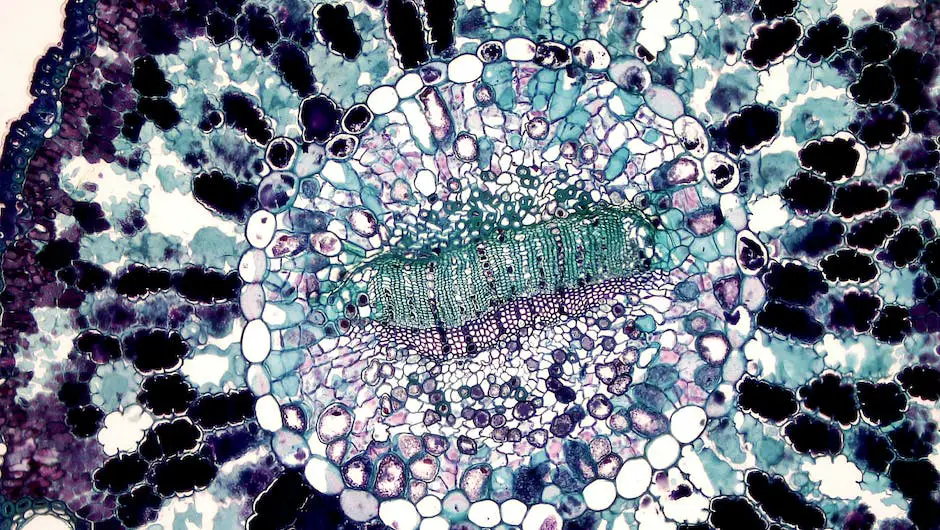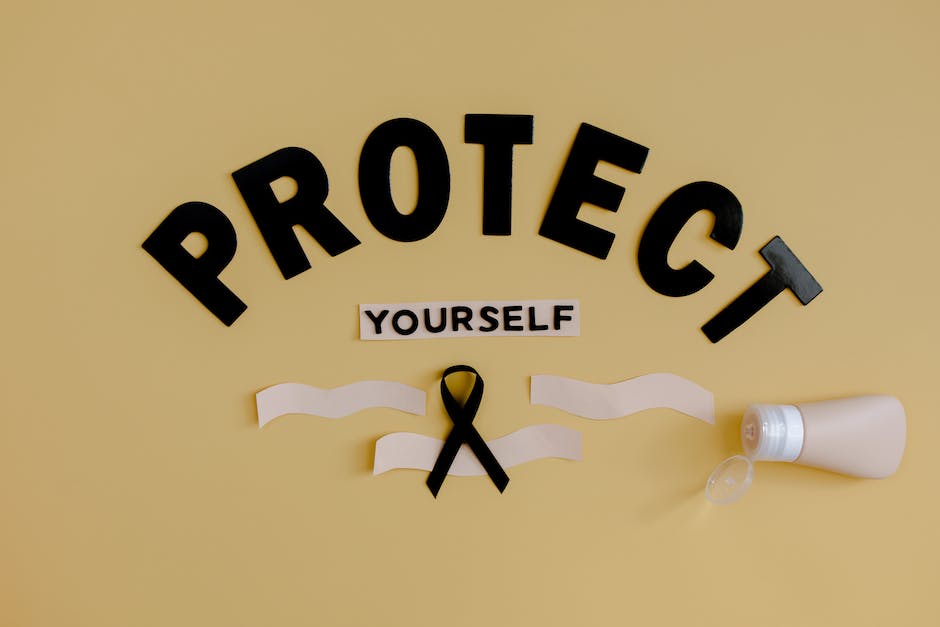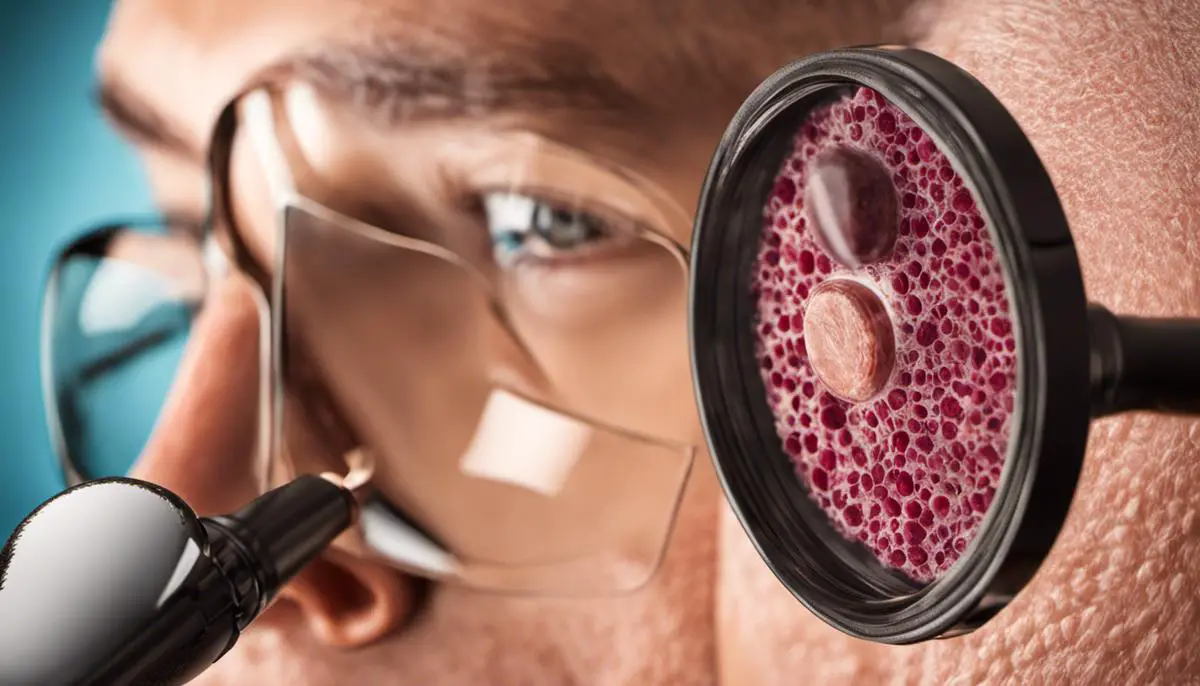Having a comprehensive understanding of Basal Cell Carcinoma (BCC) can be vital in managing and preventing the disease. BCC, one of the most common skin cancers worldwide, is largely curable; however, delayed diagnosis and treatment may lead to severe complications. This includes extensive local tissue damage and even a potential correlation with other types of cancer. A clear grasp of BCC’s causes, symptoms, and stages can play a significant role in early detection, which is the most effective way to manage the disease. Moreover, acknowledging how untreated BCC can progress over time provides insights into the gravity of neglecting the condition.
Understanding Basal Cell Carcinoma (BCC)
Understanding Basal Cell Carcinoma (BCC)
Basal Cell Carcinoma (BCC) is the most common type of skin cancer, accounting for almost 80% of all skin cancer cases. Striking the basal cells located in the bottom layer of the skin’s outermost layer, BCC primarily develops in regions of the body that receive the highest amount of sun exposure such as the face, neck, ears, and scalp.
Causes and Symptoms of BCC
BCC is primarily caused by overexposure to ultraviolet (UV) radiation either from the sun or artificial sources like tanning booths. Factors such as lighter skin tones, age, history of sunburns, exposure to certain chemicals, and a weakened immune system may increase the risk for BCC.
The cancer typically presents itself as a waxy bump, flat, flesh-colored or brown scar-like lesion, or a bleeding or scabbing sore that heals and returns. If these symptoms persist, it’s recommended to seek a dermatologist’s professional opinion.
Diagnosis and Stages
Diagnosis of BCC typically involves a series of consultations and tests. The first step is usually a physical examination wherein the doctor inspects the skin thoroughly. In some instances, a skin biopsy may be conducted where a small skin sample is collected and sent to pathology to determine the presence of cancer cells.
BCC does not have particular stages like other cancers due to the fact that it rarely spreads to other areas of the body. However, it is classified based on its likelihood to recur and its potential to cause disfigurement or harm.
Basal Cell Carcinoma: Early Detection and Cancer Progression
Basal Cell Carcinoma (BCC) requires early detection and treatment, as neglecting it can lead to growth into surrounding areas, potentially invading the bone and other tissues beneath the skin.
BCC seldom spreads, or metastasizes, to other parts of the body. However, untreated BCC can result in extreme changes, leading to significant disfigurement, especially when it is facial. Importantly, individuals with a history of BCC have an increased risk of other skin cancers, such as melanoma, which can prove more hazardous. Studies indicate that individuals with a prior history of skin cancer are potentially at risk of developing different forms of cancers elsewhere in their bodies.
While BCC can penetrate deeply causing considerable tissue and bone damage, the probability of it leading to cancer types other than skin cancer is relatively low. It’s vital to remember that any form of cancer indicates an abnormal cell behavior, necessitating vigilant health maintenance, healthier lifestyle choices, and regular check-ups and skin examinations.
In conclusion, it is crucial not to ignore BCC. Although it is unlikely to metastasize, it can considerably impact quality of life, lead to disfigurement, and heighten the risk of developing other skin cancers.

Progression of Untreated BCC
Risks and Complications of Untreated Basal Cell Carcinoma
As one of the most common forms of skin cancer, Basal Cell Carcinoma (BCC) usually occurs as a result of extended exposure to ultraviolet (UV) light. This exposure instigates the mutation and unchecked growth of basal cells present in the skin’s basal layer. If untreated, the progression of BCC can lead to an assortment of profound complications.
Physical Complications and Tissue Destruction
Untreated BCC can invade the surrounding tissues and cause significant local tissue destruction. Over time, the tumor can enlarge, leading to ulcers that fail to heal, bleeding, and possible infection, which may result in significant discomfort and disfigurement. Specifically, BCCs in the facial area can invade and erode structures such as the eyes, ears, and nose, leading to loss of function and physical deformity.
While invasive BCC can cause substantial local damage, it is critical to mention that this type of cancer rarely spreads (metastasizes) to other parts of the body. The rate of metastasis of BCC is less than 0.1%, meaning that it is highly unlikely for BCC to lead to other forms of cancer outside of the skin.
BCC as Indicator for Increased Risk of Other Cancers
It’s important to note, however, that while BCC itself may not metastasize, individuals diagnosed with BCC have been linked to an increased risk of developing other types of non-skin cancer. This correlation may be attributed to shared risk factors between BCC and other cancers, such as exposure to radiation or certain lifestyle factors like smoking or an unhealthy diet.
A diagnosis of BCC can also signify a predisposition to other types of skin cancer such as melanoma, which has a higher potential for metastasis and can be lethal if not detected early. The correlation could be due to genetic factors or to the exposure to UV radiation damaging the skin cells, heightening the risk for other skin cancers.
To Summarize
Unchecked basal cell carcinoma (BCC) might not lead directly to other types of cancer, however, it can cause significant local damage and disfigurement. Also, having BCC can suggest an increased risk for other types of cancer, mainly skin-related ones. It’s crucial to consider a BCC diagnosis as a serious matter and to explore treatment options with healthcare professionals to reduce potential risks.

Untreated BCC’s Link to Other Cancers
Grasping the Basics of Basal Cell Carcinoma
Basal cell carcinoma (BCC), the most widely seen skin cancer in humans, occurs in the basal cells that form the deepest layer of the skin’s outer layer, the epidermis. BCCs typically present as slightly translucent bumps, frequently in areas that have been exposed to the sun.
Untreated BCC and the Risk of Other Cancers
While BCC itself is slowly progressive and rarely spreads (metastasizes) to distant parts of the body, untreated BCC has been associated with a higher risk of subsequent cancers. Some current research implies that individuals who have experienced BCC are at an increased risk of developing melanoma and other types of skin cancers.
BCC as a Marker for Skin Cancer History
In many cases, BCCs often serve as indicators of a person’s lifetime exposure to ultraviolet radiation, a prominent risk factor for all types of skin cancer. As a result, when a BCC goes unnoticed or untreated, it can serve as a marker for potential future skin cancers, including those more deadly than BCC like melanoma.
Genetic Factors and BCC
Moreover, studies have found a relationship between those with a history of BCC and a predisposition to other types of cancers. There can be shared genetic risk factors, especially among people who have been diagnosed with multiple BCCs. Notably, those who develop BCC at a young age may have an increased genetic susceptibility to cancer, which can lead to a higher risk of developing other types of malignancies.
BCC and Internal Malignancies
Recent research has shown a small but significant increased risk of internal malignancies (like breast or lung cancer) among patients with BCC. However, more studies are needed to draw definitive conclusions. It’s important for patients and clinicians to be aware of this potential link and to monitor accordingly.
Importance of Early Detection and Treatment
Timely detection and treatment of BCC are crucial not only to prevent the cancer from growing or spreading but also to possibly prevent or reduce the risk of developing other cancers. It is important to undergo regular skin checks to identify any suspicious lesions early. Treatments for BCC are highly effective, especially when implemented early on.
Understanding the Risks of Untreated Basal Cell Carcinoma
As a type of skin cancer, basal cell carcinoma (BCC) may seem less threatening due to its slow growth and low likelihood of spreading to other parts of the body. However, it’s important to note that those diagnosed with BCC have shown an elevated general risk for other types of cancer. This includes internal malignancies and melanomas. With this in mind, the importance of early detection and treatment of BCC cannot be overstated. Not only does it prevent BCC from evolving into a more significant issue, but it also leads to the early identification and subsequent treatment of potential other cancers.

Prevention and Importance of Treatment for BCC
The Nature of Basal Cell Carcinoma
Basal cell carcinoma is the most common form of skin cancer. It originates in the basal cells, found in the bottom layer of the epidermis, the skin’s outermost layer. BCC can present in different ways, often appearing as a shiny bump that resembles a pearl, a patch of skin that looks like a scar, or a bleeding or scabbing sore that heals but consistently comes back. Becoming familiar with these signs can aid in early detection and prompt treatment, contributing to a better overall prognosis.
The Risk of Untreated BCC
While BCC is generally a slow-growing type of cancer, if left untreated, it can result in severe damage and disfigurement by invading surrounding tissues and destroying skin, bone, and cartilage. There is also the risk that the cancer cells can spread, or metastasize, to other parts of the body. Although rare, untreated BCC can potentially lead to other types of cancer.
Prevention Strategies for BCC
Preventing BCC requires guarding the skin from the sun’s harmful ultraviolet (UV) rays since excessive UV exposure is the leading cause of most skin cancers, including BCC. Regular use of a broad-spectrum sunscreen with an SPF of 30 or higher, wearing protective clothing and hats, and seeking shade during peak sunlight hours are all effective prevention strategies. Regular self-examination of the skin for changes and annual skin checks by a healthcare professional are also essential for early detection and treatment.
Early Detection and Importance of Regular Skin Checks
Early detection of BCC is key to effective treatment. Look for any unusual changes in the skin, such as a new growth, a sore that does not heal, or any change in a birthmark, mole, or brown spot. It’s important to get regular skin checks by a dermatologist or other qualified healthcare professional, as they can spot abnormalities and ensure any suspicious lesion is biopsied and appropriately managed.
Treatment Options for BCC
BCC treatment depend on factors like the size, location, and depth of the lesion, the patient’s age and overall health. Options include surgical removal of the cancerous lesion, curettage and desiccation (scraping away the lesion and using electricity to kill remaining cancer cells), cryotherapy (freezing the cancer cells), radiation therapy, and applications of creams or gels directly to the skin. In some cases, newer targeted therapies or immunotherapies may be used.
In conclusion, untreated BCC can lead to major health complications and potentially other cancers. Thus, it’s critical to prioritize prevention, early detection, and prompt treatment. Regular skin checks and vigilance for any changes on your skin remain your best protection.

Adequate knowledge about Basal Cell Carcinoma (BCC), its progression if left untreated, and its possible link to other cancers is not enough. Taking preventive measures and regular skin check-ups is equally important. Implementing sun safety in our everyday lives, being aware of any unusual skin changes, and having these changes checked by a doctor can act as strong defense mechanisms. Treatment for BCC, when done early, promises a good prognosis, with several effective options available, including surgical and non-surgical methods. Ultimately, early detection and treatment can spell the difference between mild skin lesions and catastrophic health outcomes such as other cancers.
